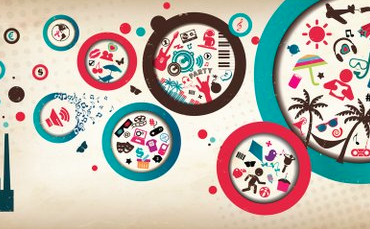Interoperability Specs for IoT Advance

The IoTivity open source software framework aimed at providing connectivity standards for the emerging Internet of Things has unveiled a "preview release" of a spec designed to ensure interoperability among devices and services across a range of industries.
The Version 0.9.0 reference standard released on January 14 by the Open Interconnect Consortium (OIC) and backed by the Linux Foundation is part of an open standard and specification effort that is expected to be followed by a completed standard during the first half of 2015, organizers said. Products based on the standard could appear by as early as the second half of this year, Mark Skarpness, director of embedded software at Intel Corp.'s Open Source Technology Center, said in an interview. Skarpness also serves as chairman of the IoTivity Steering Group.
OIC and the Linux Foundation are stressing interoperability standards for devices, machines and sensors that will help jump start IoT innovation. "Open source software and collaborative development are the building blocks to get us there," said Jim Zemlin, executive director of the Linux Foundation.
Along with open standards and specs, the Linux Foundation is also promoting collaborative code development since, according to Zemlin, common code bases have become a sure-fire way to promote innovation.
Skarpness said in an interview that IOC is focusing on the software layer that allows "things to discover each other in s secure way." He foresees an architecture in which the common framework provides local communications links between devices, then helps in "marshaling data back into the cloud." That approach promises to help deal with the massive amounts of data expected to be generated by a future IoT.
The interconnect consortium was formed in July 2014 as a Linux Foundation collaborative project to define IoT standards and a certification process. The consortium includes more than 50 members, including Intel, Cisco, Hewlett-Packard and Samsung Electronics. In December, the group announced 15 new members, including industrial giants GE Software and Siemens AG.
The entry of large industrial firms into the IoT standards process is sure to help scale the effort as the number of connected "things" moves from consumer devices and smart homes to huge market segments like manufacturing and industrial automation, organizers stressed.
The participation of large industrial companies "will help us to ensure our collaboration includes input from key players representing the Internet of Things market breadth," noted OIC President Jong-Deok Choi, executive vice president and deputy head of Samsung Electronics' Software R&D Center.
Meanwhile, the role of the IoTivity project headed by Intel's Skarpness is to oversee open source implementation of the IOC reference standard. The IoTivity project is licensed under the Apache License version 2.0.
Under the Linux Foundation, the IoTivity steering group chaired by Skarpness works with OIC members. The project includes RESTful-base APIs, and organizers expect the results to be available in a range of programming languages for a variety of operating systems and hardware platforms.
Intel had taken the lead on device interoperability standards as it rolls out its own IoT platform. The chipmaker, which claims about $2 billion in revenues from its nascent IoT business, is betting that the explosion of connected “things” (Intel estimates 40 billion sensors and 10 billion devices by 2020), an estimated 40-fold increase in the wireless device connections along with the Intel’s founding principle—Moore’s Law—are all driving the Internet of Things.
"We view OIC as a way of accelerating the market" for IoT technologies, Skarpness said. "We think of [the IoT standards initiative] as a really necessary foundation." Once interoperability specs that would serve as the "glue" of the IoT are in place, he added, "We're selling the product ingredients."
If the momentum of the OIC and IoTivity continue to build, those connected products could reach the marketplace by the end of this year, perhaps transforming the Internet of Things from a marketing strategy to a business model.










